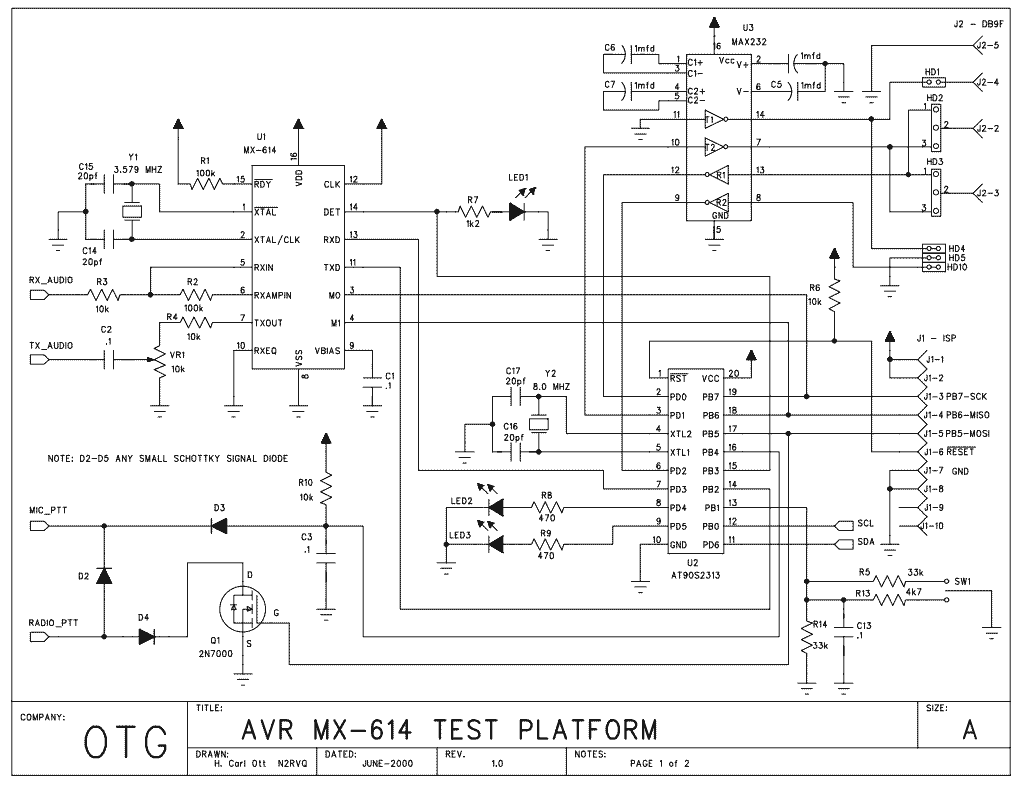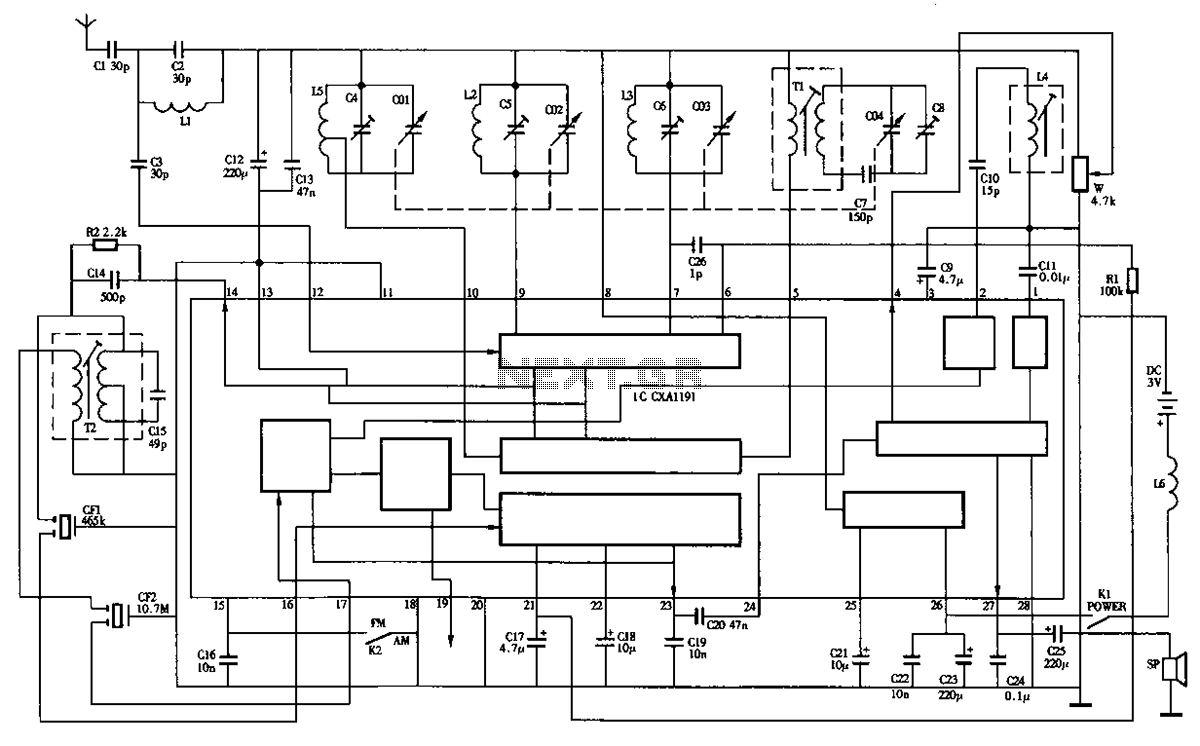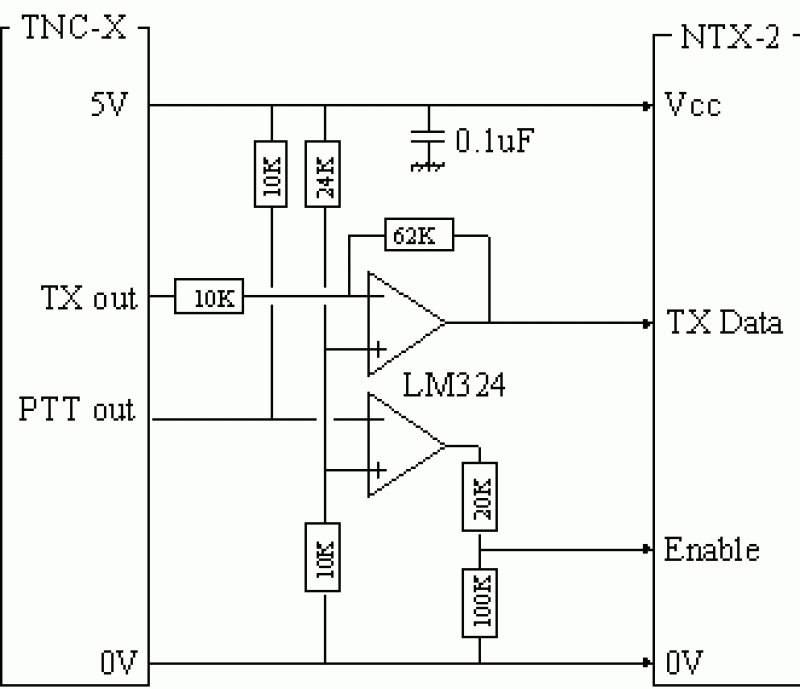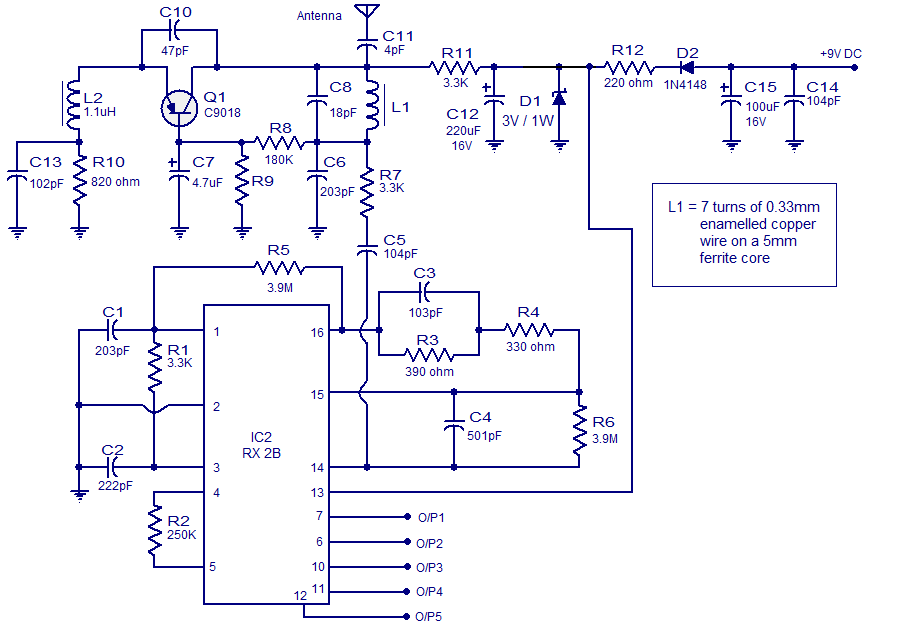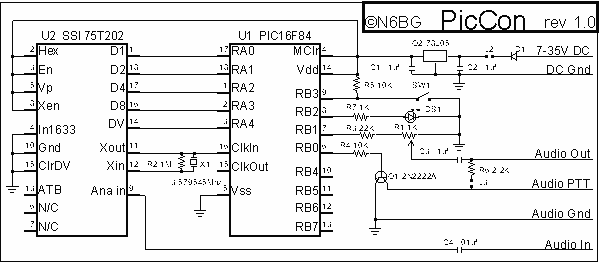
Superregenerative radio receiver
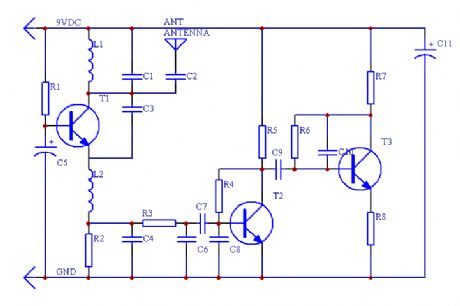
This is a simple RF receiver primarily designed for low-distance digital radio receiver applications. The analog output of this circuit should be connected to a Schmitt-trigger signal conditioning circuit with an appropriate capacitor value (from the collector of T3). The inductor L1 for 27 MHz consists of a specific number of turns wound on a 6 mm diameter coil body. The circuit can be adapted for other frequencies if adjustments are made to L1.
The RF receiver circuit operates on the principle of capturing radio frequency signals and converting them into a usable analog output. The design is optimized for short-range communication, making it suitable for applications such as remote controls or simple wireless data transmission.
The circuit includes a radio frequency oscillator, which generates the carrier wave at the desired frequency, in this case, 27 MHz. The inductor L1 plays a crucial role in determining the resonant frequency of the oscillator circuit; its inductance value must be carefully calculated based on the desired frequency of operation. The number of turns in L1, along with its diameter, will affect the inductance, and thus, the performance of the receiver.
The output from the RF receiver is an analog signal that represents the modulated information carried by the RF wave. To ensure that this signal is clean and suitable for further processing, it is necessary to connect it to a Schmitt-trigger signal conditioning circuit. This circuit will help to eliminate noise and provide a clean digital output by converting the analog signal into a square wave. The choice of capacitor value in this configuration is critical, as it affects the response time and stability of the signal.
Additionally, the circuit can be modified to accommodate different frequencies by adjusting the parameters of L1. This flexibility allows the RF receiver to be tailored for various applications beyond the specified 27 MHz, making it a versatile choice for low-distance digital radio communication. Proper tuning of the circuit components will ensure optimal performance, reliability, and signal integrity in the intended application.This is a simple RF receiver mainly for low-distance digital radio receiver application. The analog output of this circuit should be connected to a schmitt-trigger signal conditioning circuit with a proper value capacitor (from collector of T3). L1 for 27Mhz is about turns, 6 mm diameter coil body. The circuit is suitable for other frequencies if L1 is.. 🔗 External reference
The RF receiver circuit operates on the principle of capturing radio frequency signals and converting them into a usable analog output. The design is optimized for short-range communication, making it suitable for applications such as remote controls or simple wireless data transmission.
The circuit includes a radio frequency oscillator, which generates the carrier wave at the desired frequency, in this case, 27 MHz. The inductor L1 plays a crucial role in determining the resonant frequency of the oscillator circuit; its inductance value must be carefully calculated based on the desired frequency of operation. The number of turns in L1, along with its diameter, will affect the inductance, and thus, the performance of the receiver.
The output from the RF receiver is an analog signal that represents the modulated information carried by the RF wave. To ensure that this signal is clean and suitable for further processing, it is necessary to connect it to a Schmitt-trigger signal conditioning circuit. This circuit will help to eliminate noise and provide a clean digital output by converting the analog signal into a square wave. The choice of capacitor value in this configuration is critical, as it affects the response time and stability of the signal.
Additionally, the circuit can be modified to accommodate different frequencies by adjusting the parameters of L1. This flexibility allows the RF receiver to be tailored for various applications beyond the specified 27 MHz, making it a versatile choice for low-distance digital radio communication. Proper tuning of the circuit components will ensure optimal performance, reliability, and signal integrity in the intended application.This is a simple RF receiver mainly for low-distance digital radio receiver application. The analog output of this circuit should be connected to a schmitt-trigger signal conditioning circuit with a proper value capacitor (from collector of T3). L1 for 27Mhz is about turns, 6 mm diameter coil body. The circuit is suitable for other frequencies if L1 is.. 🔗 External reference
